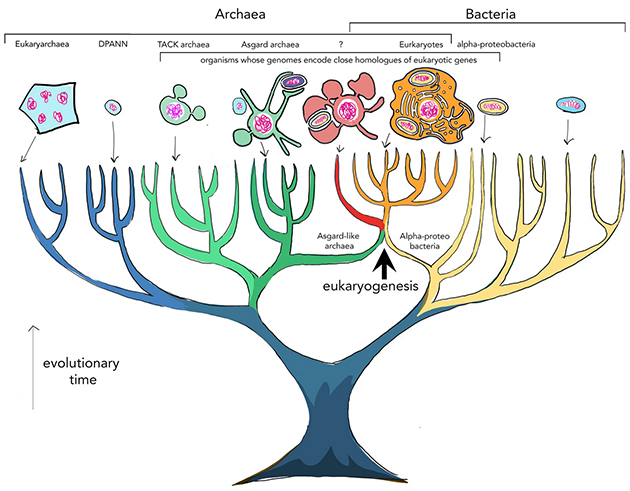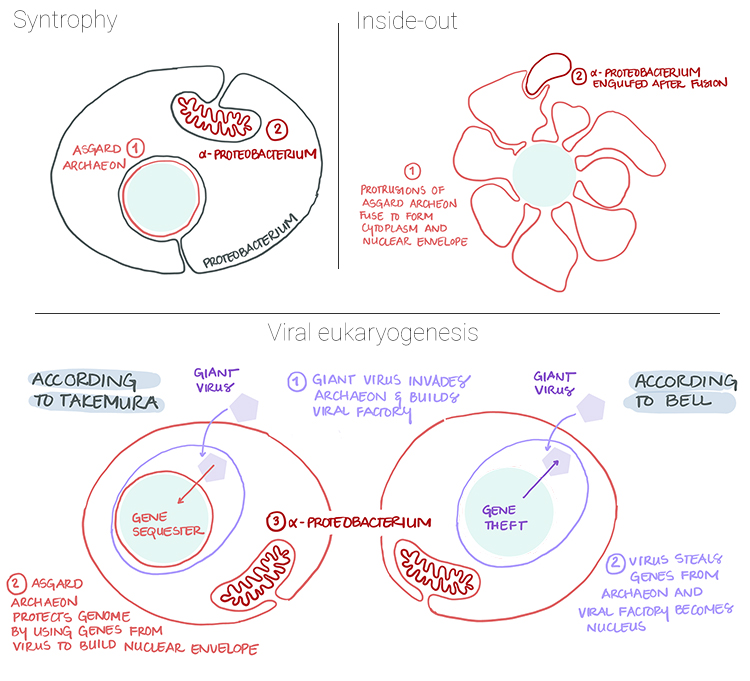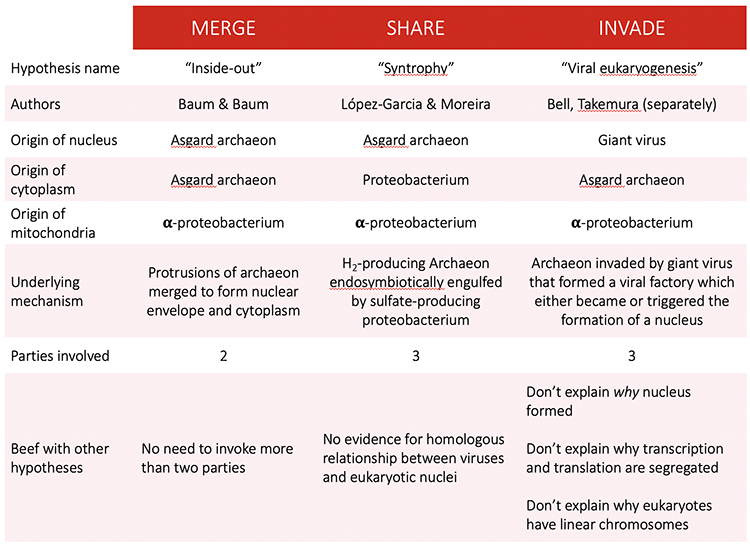Merge, share or invade
Stories from beyond the cracks
In the final weeks of last year, I established that although science had experienced a veritable PR boost in 2020, inquiries into fundamental questions about living organisms went unnoticed – science lost in the fray.
One overlooked story was a cluster of articles on competing hypotheses about the unexplained appearance of eukaryotes – cells with a nucleus. I confess, I'd never given much thought to eukaryogenesis. Somehow, I quelled that curiosity with the endosymbiotic hypothesis, which says a lot about mitochondria but little about the membrane-bound compartmentalization of genomic DNA.
Relatives to the gods
The articles describe 3 ideas about how the core of our cells came to be. All recognize that eukaryotic cells are the outcome of emergent complexity. Ancestors of today's archaea and bacteria already evolving along separate paths merged to form a superorganism. All hypotheses also give place to the alpha-proteobacterium that took up residence in a larger cell ultimately giving rise to today's mitochondria. And all see an archaeon as the main protagonist of this evolutionary story – likely a predecessor of the Lokiarchaeota.
This phyllum of the archaea was introduced in 2015 based on a genome identified in samples take from a deep-sea hydrothermal vent called Loki's Castle. Lokiarchaeota and its "cousin" phylla Odinarchaeota, Thorarchaeota, and Heimdallarchaeota form a monophyletic superphylum: the Asgard. And based on a set of highly conserved protein-coding genes, these are the closest prokaryotic relatives of eukaryotes. I hope the names of the Norse gods and their abode have not gone lost on you.
Where the hypotheses differ is in how many ancestors were involved and just how they came together. Merge, share or invade is how I like to think of them.
The debate
The notion of syntrophy underlying eukaryogenesis has been around for a while and it mirrors the endosymbiotic hypothesis that explains the presence of mitochondria. As such, the idea has only been updated with information about the nutrients likely exchanged by the archaeon and proteobacterium that ultimately became one. Proponents see no evidence that other agents, like viruses, were involved. Baum and Baum (who are cousins) take an even more parsimonious approach, seeing no need for a bacterium at all: the archaeon engulfed its own genomic material through the fusion of cytoplasmic (and membrane) protrusions exploring the immediate surroundings of the cell.
And then there is the idea that a virus gave rise to the nucleus – a hypothesis proposed separately by Bell in Australia and Takemura in Japan. Giant viruses are a thing. They have enormous and linear genomes, and some build compartments in their host cells to replicate. Bell and Takemura suggest this invasion gave rise to a nucleus either by triggering the host cell to protect its own genome with a membrane barrier or by establishing conditions under which the "virus factory" seized host genes and became the nucleus. Their strongest argument is that this hypothesis actually explains the why of eukaryogenesis, not just the how.
The resolution
We might find out soon who is right. A Japanese research group has managed to culture a strain of Lokiarchaeota in the lab. This strain associates with non-congeners: it produces hydrogen as a metabolic byproduct which is consumed by hydrogen-swilling microbes (syntrophy). The strain also exhibits complex protrusions of its external membrane using genes shared with eukaryotes (inside-out). But the test of fire will be to see if this Lokiarchaeota can be infected by some of the giant viruses found in the same deep-sea sediment and whether these build viral factories with membranes similar to the nuclear envelope.
That discovery, I hope, will not fall through the cracks.
Further reading
Did viruses create the nucleus?
The syntrophy hypothesis for the origin of eukaryotes revisited
Evidence supporting a viral origin of the eukaryotic nucleus
Isolation of an archaeon at the prokaryote-eukaryote interface



